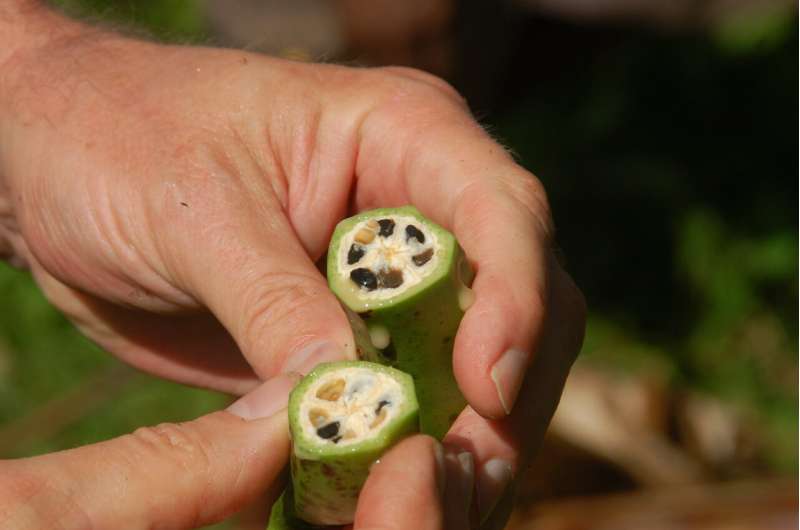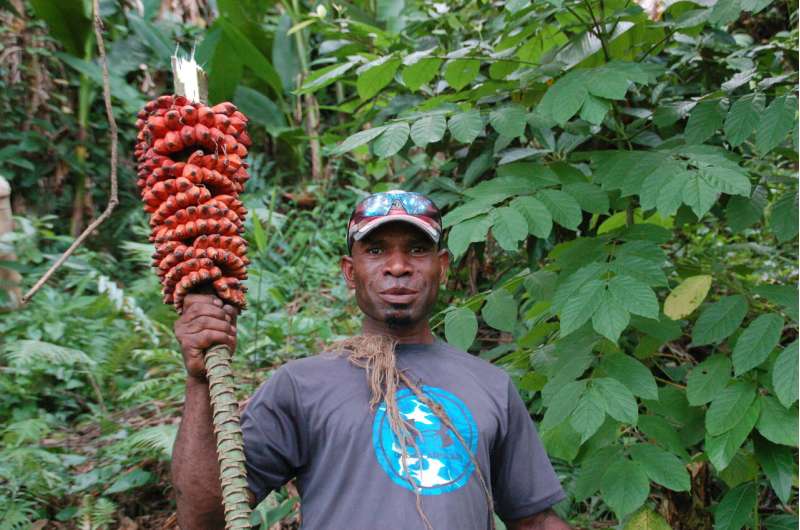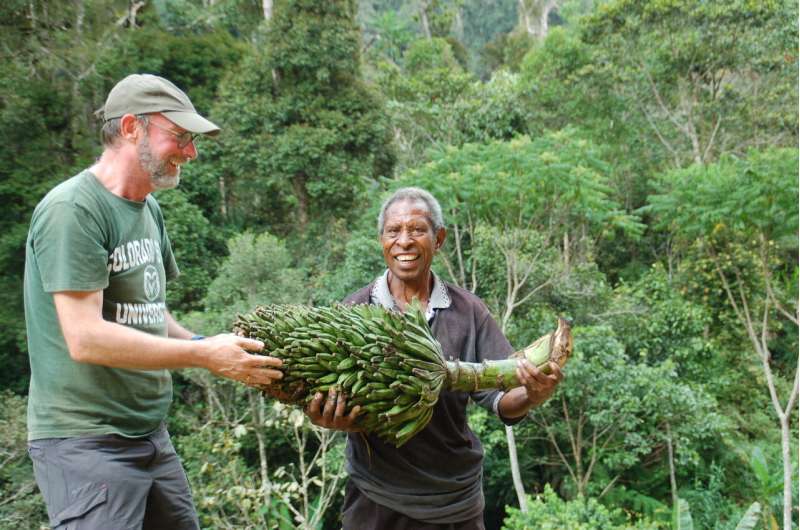On the hunt for wild bananas in Papua New Guinea

The banana has its earliest origins in Papua New Guinea, where it was domesticated by indigenous communities at least 7,000 years ago. This ancestor, Musa acuminata, subspecies Banksii, looks very different from the ubiquitous Cavendish banana: peeling back its skin reveals hundreds of large, hard seeds that enable easy reproduction in the wild.
Today, a colorful mix of wild bananas (including Banksii) still grow throughout the humid forests of New Guinea. However, as deforestation and fires decimate tropical and subtropical forests across the South Pacific, we risk losing both the ancestors and the possible future of the banana we know and love.
Against the backdrop of climate change, pests, and rampant diseases, researchers and crop breeders are scrutinizing diverse banana varieties for traits such as disease tolerance, pest resistance, and their ability to adapt to fluctuating temperatures. Wild bananas represent a largely untapped wealth of genetic diversity. Sebastien Carpentier, a scientist at the Alliance of Bioversity International and CIAT, explains: "It's very important for breeders to have access to crop wild relatives of bananas to help them find the traits that they are looking for."
Mission: Search and collect
At the International Musa Germplasm Transit Center (ITC) in Leuven, Belgium, the Alliance manages the world's largest collection of banana germplasm. Yet despite currently holding 1,617 banana accessions, the genebank only scratches the surface of wild banana diversity. Bart Panis, a senior scientist based at the ITC, notes, "We don't know how much is out there."
In-situ conservation is becoming less likely with the loss of the wild bananas' habitat, therefore scientists like Panis are working against the odds to "fill in the gaps" by collecting samples in their native habitat, then transporting them to genebanks for further research and ex-situ conservation.

Last year, a collecting expedition touched down in Papua New Guinea that included Panis, Carpentier, and several other researchers collaborating with the county's National Agricultural Institute, NARI. For nearly two weeks, the team scoured terrain high and low, gathering a total of 31 bunches of eight different species while observing their adaptations in diverse environments.
One particularly fortuitous find was the giant Musa ingens. Despite competing with neighboring trees to grow as high as 15 meters, this towering species is no match for extensive land clearing and currently faces extinction.

Collection challenges
Collection is not easy work: elusive crop wild relatives are called wild for a reason. While they might have favorable traits, some species remain uncultivated because they are not edible for humans. Even banana specialists cannot always identify wild species in the field, and once they are found, the plants might not be in the brief stage where seeds or genetic material are available (bananas do not follow a predictable schedule for fruiting and flowering).
Preservation of viable material also makes successful storage and transportation a major challenge (fruits had to survive 2-4 weeks of travel before their seeds were extracted in Belgium). Furthermore, researchers must adhere to many countries' strict restrictions on the collection and transportation of plant genetic material.
Ensuring future generations of bananas
Back in Belgium, the team carefully stored genebank samples (techniques include drying and cryopreserving seeds) and began conducting a series of experiments to better understand the newly collected material.
Following field observation of Musa balbisiana persevering in open land recovering from fires (indicating the growth of extensive root systems to facilitate water uptake), the researchers have gained insights on water use efficiency, which could help breeders adapt bananas to resist future drought scenarios— a serious priority as banana farmers currently suffer from up to 65% harvest losses related to drought.
Carpentier notes that there is also potential to fight pests and diseases, saying, "We need to continue to collect, store and screen for resistance in banana wild relatives." Other points of interest include health benefits (wild bananas have been used in traditional medicine, but this is not well-documented) and implications for increasing the yield of bananas per plant.
The results are summarized in two articles, one in Plants evaluating methods to ensure the viability of collected seeds, and the other in Crop Science summarizing the characterization of diverse phenotypes.
The scientists conclude that this work is just part of the ongoing effort to fill in knowledge gaps and ensure the survival of diverse, resilient bananas. Panis and Carpentier agree that it doesn't matter who does it, but it is critical that these banana wild relatives continue to be collected and conserved before they disappear forever.
More information: Simon Kallow et al, Challenges for Ex Situ Conservation of Wild Bananas: Seeds Collected in Papua New Guinea Have Variable Levels of Desiccation Tolerance, Plants (2020). DOI: 10.3390/plants9091243
David Eyland et al. Filling the gaps in gene banks: Collecting, characterizing and phenotyping wild banana relatives of Papua new guinea, Crop Science (2020). DOI: 10.1002/csc2.20320
Provided by International Center for Tropical Agriculture


















